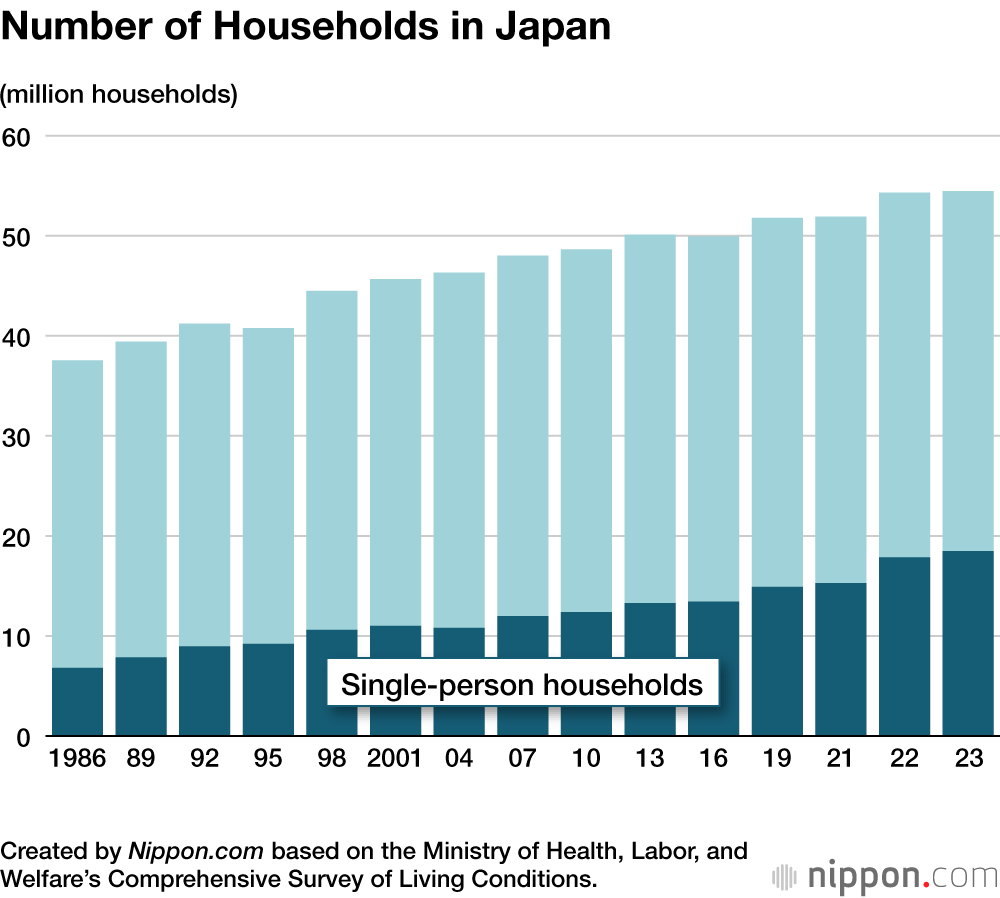
One in Three Japanese Households Consist of Just One Person
Society- English
- 日本語
- 简体字
- 繁體字
- Français
- Español
- العربية
- Русский
The Ministry of Health, Labor, and Welfare’s Comprehensive Survey of Living Conditions for 2023 found that there were 54,452,000 households in Japan as of June 1 of the same year. Among them, “single-person households” were the most common, totaling 18,495,000, or 34.0% of all households. This was followed by the 13,516,000 households consisting of a married couple and their unmarried children and 13,395,000 households consisting of a married couple only, respectively constituting 24.8% and 24.6% of all households. The average household consisted of 2.23 members, a decrease of 0.02 compared to the previous year.
In 2001, there were 11 million single-person households, but this total has increased 1.7-fold over a period of just over two decades. In 2019, the number of single-person households surpassed households consisting of a married couple and their children. Among single-person households, 8,553,000, or 46.2%, consist of a senior (65 and over) living alone, which is a 2.7-fold increase over the 3,179,000 households in 2001.
“Senior households,” consisting only of members 65 and over or a mixture of those 65 and over and children under 18, numbered 16,560,000, or 30.4% of the total households. About half of these are single-person households, and more than 40% consist of just a married couple. Among seniors living alone, 64.4% were women and 35.6% were men.
There are 39,527,000 seniors in Japan aged 65 and over. Of these 15,938,000 live in households consisting only of a married couple, which is most common, followed by households with children and single-person households.
Households with children under 18 numbered 9,835,000, representing 18.1% of all households, a decrease of 10 percentage points compared to 28.8% in 2001. The number of households with children in which the mother is working was 7,212,000, accounting for 77.8% of all households. This percentage increased by 2.1 percentage points year on year, marking a record high since comparable data became available in 2004.
(Translated from Japanese. Banner photo © Pixta.)

